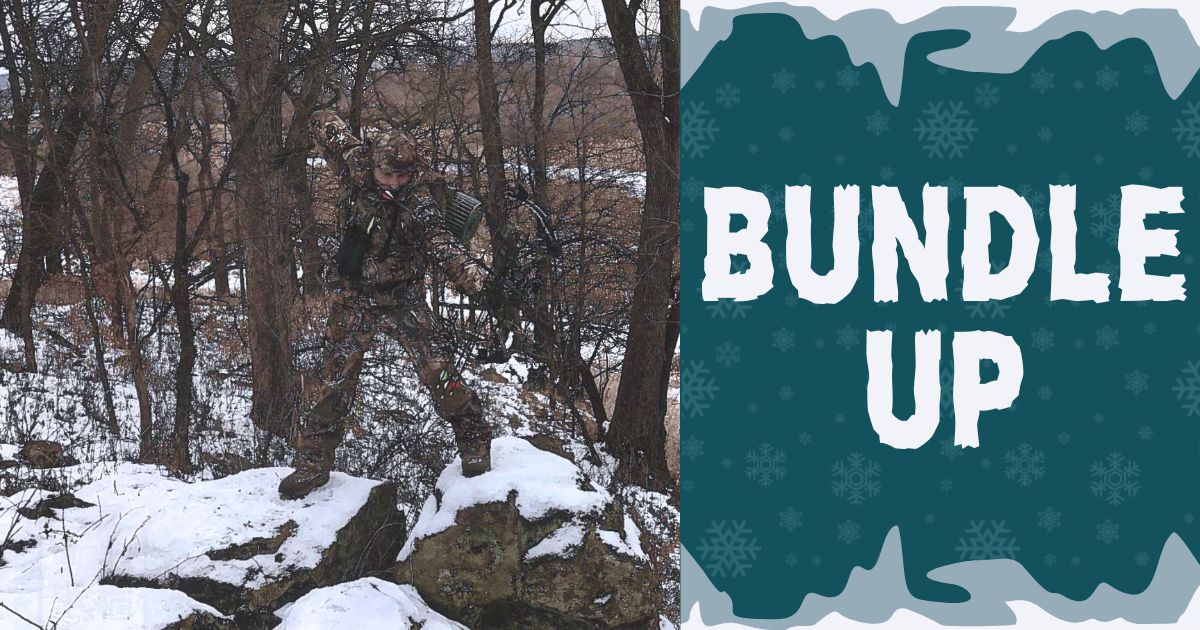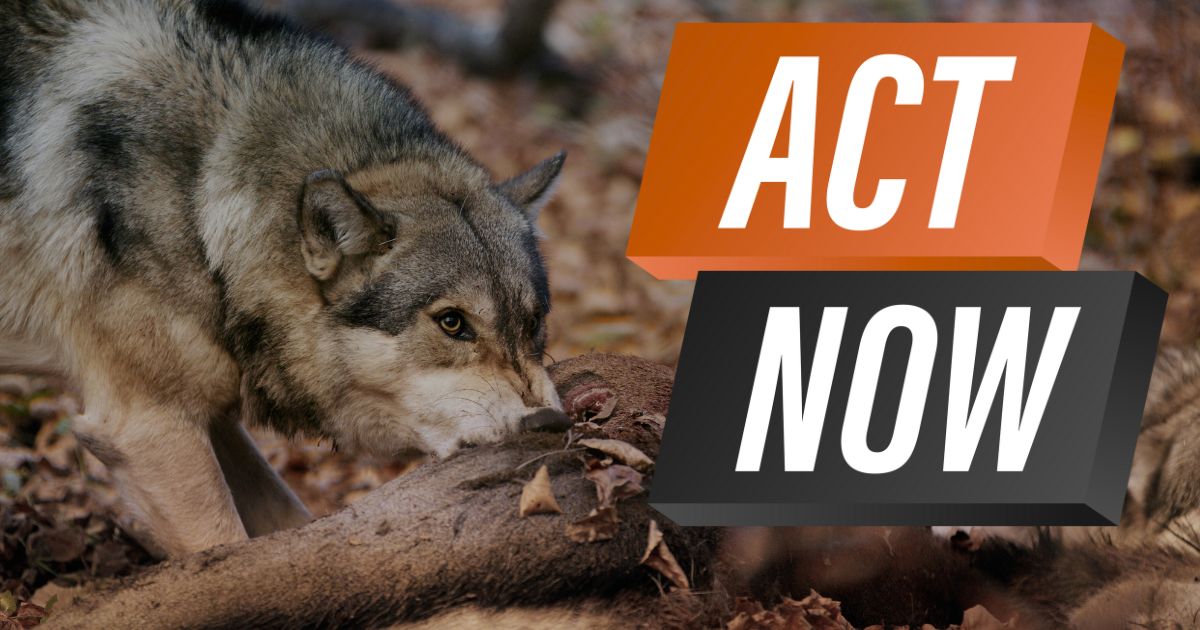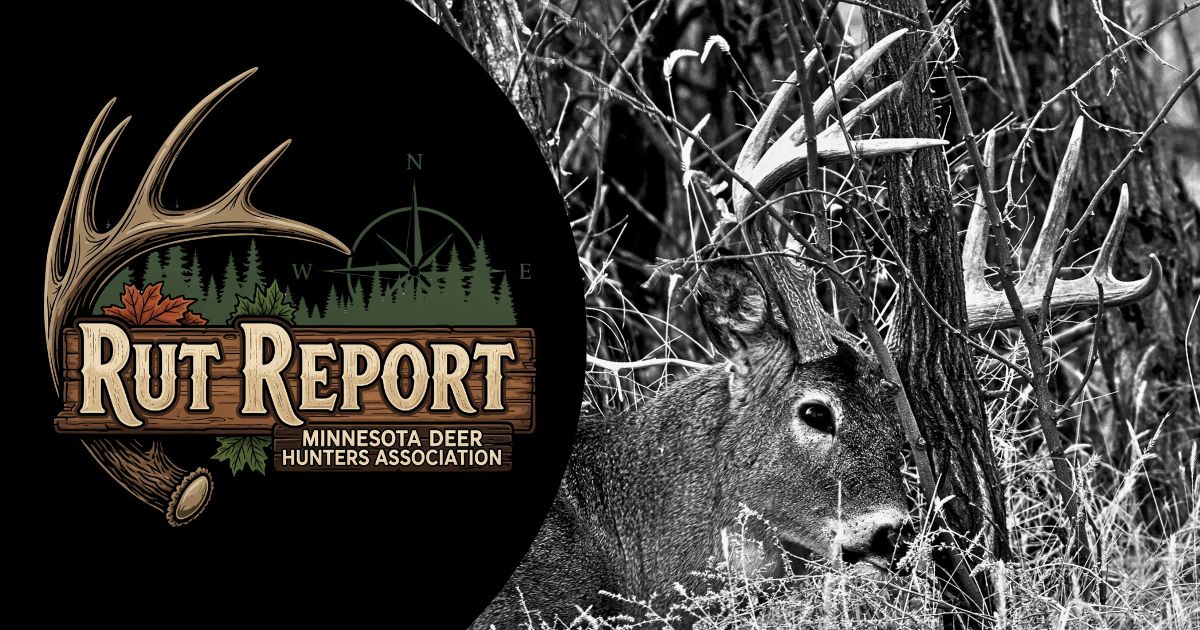
- Joe Shead
- From Whitetales
- Hits: 1807
Bundle Up for a Crack at Winter Whitetails
- Joe Shead
- From Whitetales
- Hits: 1807
There's nothing fun about bowhunting in the waning days of archery season. After weeks of pressure from gun hunters and muzzleloader hunters, there are a lot fewer deer around than at the beginning of the season. And by Christmas, temperatures can be brutal. Throw in a stiff northwest wind and you might start to wonder if you belong in an asylum, rather than a tree stand. So why do late-season bowhunters take to the woods in less-than-ideal conditions? Because they can. When you live for deer hunting, you have to take advantage of every opportunity. Despite the brutal conditions, December can actually be a good time to tag a deer.
It's easy to dwell on the obvious negatives of late-season bowhunting, so let's focus on the positives. For one thing, you won't have a lot of competition from other hunters. And after weeks of harassment by hunters, once the woods quiet down, deer slowly begin to get back to their normal routines, moving a little more during daylight hours. And after running themselves ragged chasing does during the rut, bucks -- which have lost significant weight from their amorous activities -- feed heavily, making them a little more predictable. Plus, after fighting for dominance and the chance to breed, bucks let bygones be bygones and herd up with other bucks again.
So late-season bowhunting isn't all gloom and doom.
The biggest key to finding late-season deer is finding their food source. Not only are bucks trying to recover from the rut; all deer need to take in calories to stay warm in cold weather. Yes, you may encounter some late-season rutting activity if does weren't bred in November or fawns are coming into estrus late in the season, but it's hard to bank on hunting rut setups. Go to where the food is and deer will be there, whether they're rutting or not.
Scouting is key to identifying good food sources. You'll likely learn deer prefer certain crops or certain fields over others. A crop that went unharvested can be a real magnet in the late season. Take an evening to drive around, looking for deer and pinpointing where they enter and exit a field.
Sometimes you can bring the deer to you with late-season food plots. Certain plants like brassica are desirable because the starches turn to sugar after a frost, appealing to sweet-toothed whitetails.
Outside of farm country, look for stands of oaks, dogwood thickets, clearcuts or cedar swamps to provide food. If the cover is dense, you probably won't be able to see deer like you would in farm fields, but if snow is present, a low-pressure scouting mission should reveal tracks that reveal deer movements.
Evening sits are usually best for late-season hunts. You'll probably bump deer in fields trying to intercept them as they head to their beds in the morning, so an afternoon hunt is usually a better option. Plus, the afternoon is usually the warmest part of the day in December. Depending on the temperature and your cold tolerance, you may only be able to sit an hour or two, but the last couple hours before dark are usually all you need.
Bowhunting in cold weather lends its own set of challenges. First off, you need to stay warm. You'll want a moisture-wicking base layer against your skin. Sweating is your body's natural way of cooling off. Trudging through snow in heavy clothing is a sure way to work up a sweat. So carry your outer layers to your stand to keep from sweating. Your moisture-wicking base layer will pull any sweat away from your skin, keeping you warm.
For a middle layer, you want to trap heat. You want a material that holds air (air traps heat), but without too much bulk. Fleece is an excellent choice. So is Merino wool. You may even consider a couple middle layers.
Your outer layer needs to be quiet for close-range bowhunting scenarios, but it needs to keep out the elements. A fleece parka is quiet and warm, but it needs some type of coating like Gore-Tex to block the wind and snow. Just a plain fleece will quickly soak up moisture. In extreme conditions, or if you're really subject to cold, you may want to don a suit, such as a Heater Body Suit to keep out the cold. Battery-operated vests and socks are also great at staving off a chill.
Don't forget fingers and toes. Your extremities are the first things to get cold. You want a moisture-wicking pair of socks under an insulating layer of socks, capped off by some warm boots. Make sure the boots are roomy enough to easily accommodate two pairs of socks. A pinched toe is a cold toe.
You must keep your fingers nimble in order to make a shot when it presents itself. A muff lined with chemical handwarmers will keep your hands warm until you need them to make a shot. Gloves are an option, but they may interfere with your ability to shoot fingers or touch your release, so practice shooting with gloves. Gloves isolate your fingers, so they aren't as warm as mittens or a muff.
A stocking cap is critical to retaining heat, since you lose most of your body heat through your head. Some hunters prefer facemasks for extra warmth, but if you go that route, make sure your facemask doesn't interfere with your anchor point. You should always keep shooting your bow throughout the season to maintain your shooting skills, but at the very least, take a few shots while wearing your full hunting garb. Make sure your heavy clothing doesn't interfere with your bowstring. You'll also find drawing and holding a bow in cold weather, when your muscles are stiff from the cold, is much more difficult than it is earlier in the season. You may want to lower your bow's draw weight for late-season hunts.
What you consume also goes a long way to keeping your warm. Eating carbohydrates like oatmeal, potatoes or pasta releases heat slowly over time. A high-carb lunch is perfect for an evening sit. Other foods such as bananas, nuts and red meat will also help keep you warm. Also bring along a thermos of hot coffee or tea.
Once you've identified where deer are entering food sources and you're properly dressed, it's time to take to the field. But you'll need to take some extra precautions at this time of year. Most of the leaves should be down now, with the possible exception of oak leaves. Therefore, there's a lot less cover to conceal you. You may have to hunt higher or choose a stand in an oak or a conifer for better concealment. Keep in mind, hunters have harassed deer for weeks now, so they will be on their guard. Sound carries well when it's cold, so make sure your stand doesn't creak. You may want to lay a piece of carpet or fleece on the floor of your stand to reduce noise. Standing on these materials is also much warmer than standing on bare metal.
The very best time to hunt the late season is right before a storm. Deer go on the feed to prepare for the storm and often move during daylight. If you can plan your hunt around a good snowstorm, plan to get to your stand extra early, as deer may begin feeding in mid-afternoon.
If you're prone to being cold, or when the clock is running out on your season, you may consider making small pushes to get deer moving. We're not talking a full-on deer drive, with a dozen guys walking through the bush; just a simple hunt with a driver and a stander. After all, you just want to roust deer and get them out of their beds, moving slowly toward the stander, not sprinting full-tilt through the woods or the stander will never get a shot. This is a great technique to move deer out of bedding areas, but it's not something you should attempt if you're worried about bumping deer off your property and onto the neighbor's. It can be an effective technique, especially if the stander can find a good pinch point to set up in. Making a bleat with a call or your mouth may stop a moving deer long enough for a shot.
It takes perseverance and a real tolerance for cold to bowhunt during the final days of the season, but it can be worth it. Especially in farm country, deer move during the day more and are more predictable. If you'd rather eat venison than tag soup, dress for the elements and get out there. You never know, you may find the solitude makes for some of the most enjoyable hunting of the year!





